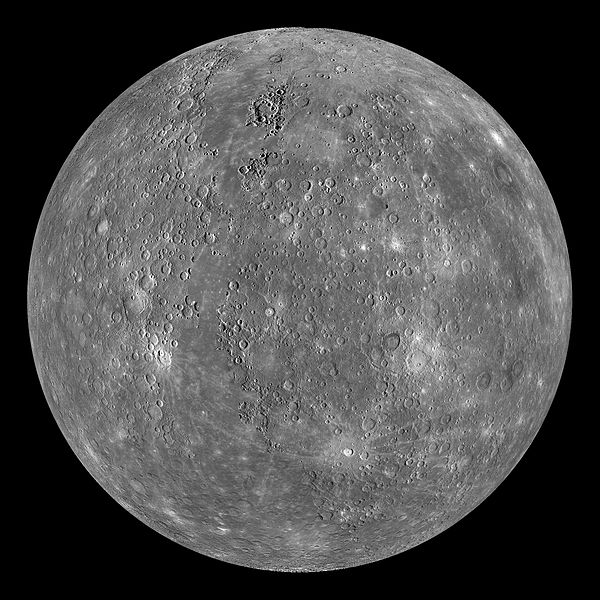
A composite photo of the planet Mercury taken by the probe MESSENGER.
Right now, there is a magnificent conjunction of three of the classical planets in the early evening sky -- Mercury, Venus, and Jupiter. Of course, spotting Venus in the evening sky is little challenge, being so bright, and Jupiter is often a brilliant night-time object. Mercury, however, is much more elusive. Having all three together in front of the Constellation Taurus is not only rather rare, but it is truly the perfect chance to spot Mercury, as you have such excellent points of reference to help you find it -- Venus and Jupiter! In point of fact, the planet Mars is also in Taurus, but not visible with the other three, as it is obscured by the Sun.
Here is a map of their position in the Constellation Taurus: http://www.heavens-above.com/constellation.aspx?con=Tau&Session=kebgfbeamnejlkjmlaekjpaf

The apparent path of the Sun through the stars -- the Ecliptic, which runs through the Constellations of the Zodiac.
Of course, the various stars in the Constellations are at rather different distances, but are grouped together as they appear from our perspective on Earth. The Sun and the Planets appear to drift through the Constellations passing along a set of particular areas known as the Zodiac. The Zodiac, all of which save one, Libra, picture living creatures (hence a sort of Zoo), are those Constellations through which the path of the Sun (from our perspective), the Ecliptic, passes. While classically, 12 Constellations fit this group, technically Ophiucus should be in the list, and Scorpius has rather scant frontage along the Ecliptic.
A Conjunction refers to the time when more than one planet appear in front of the same Constellation at the same time. Planets come into Conjunction from time to time, but it is infrequent that three of the five classical, naked-eye, planets come into Conjunction with one another. Hence the value of this appearance!
Again, now is the perfect time to spot the planet Mercury!
This article at Sky and Telescope Magazine's webpage will tell you all you need to know:
http://www.skyandtelescope.com/observing/highlights/The-May-June-2013-Planet-Dance-192020551.html
Live well!
No comments:
Post a Comment